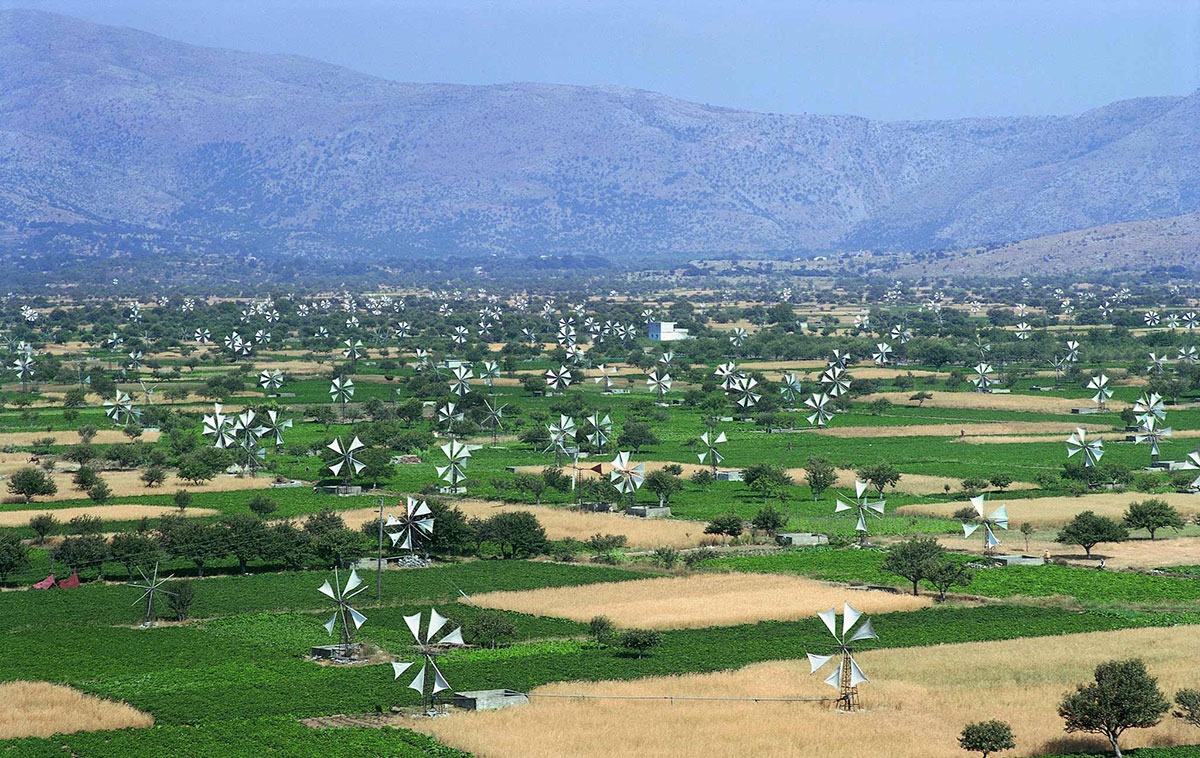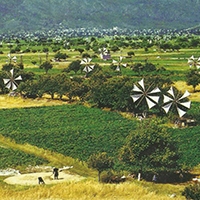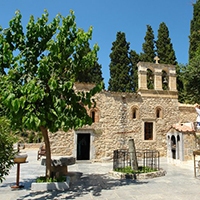Village exploring Mount Dikti

- Duration: 5-6 hours
A tour to the traditional villages of Mount Dikti on Lassithi Plateau will be a special and unique experience for every traveler.
Let's Go Crete Transfers offers this once-in-a-lifetime experience by selecting all those places that really make up the "hallmarks" of this particular and distinct region of Crete.
-
 1Windmills
1WindmillsUndoubtedly, white-cotton windmills are the “signature” of Lassithi Plateau. During its heydays, Lassithi Plateau was awash with thousands of identical windmills, making up a landscape of amazing beauty.
The first windmills are at the main entrance of the Plateau, at the region of Ambelos: 26 flour windmills in a stone tower, built on both sides of the entrance.
The inventive mind of a carpenter designed an alternative windmill mechanism, when he combined parts of a stone windmill (sails and axis) with a typical pump, creating the first wind-powered pump.
Therefore, they are rightly considered as the first, largest and most beautiful wind farm in the world.
-
 2Psychro Village
2Psychro VillagePsychro is a traditional village on Lassithi Plateau, and one of the most visited tourist attractions due to the Dictean Cave, which is located just 10 minutes away from the village.
Like almost all the villages of the plateau, it was built during the last centuries of the Venetian rule and is situated in a beautiful lush area, covered in vegetables, pear trees and apple trees.
In Psychro, we can admire the primeval traditional art of pottery-making by the remaining craftsmen and we have the opportunity to see how beautiful traditional ceramic pots, considered equivalent to the artefacts of the Minoan era, are made.
-
 3Nunnery of Kera Kardiotissa
3Nunnery of Kera KardiotissaAt an altitude of 630m, 50 km from Heraklion on the way to Lassithi Plateau, lies the convent of Kera Kardiotissa. It is one of the oldest and most historical monasteries of Crete, dedicated to the Birth of Virgin Mary.
Its name appeared for the first time in a document dating back to 1333, when it was a fief of the Latin Patriarchate of Constantinople.
The architectural structure of the convent is of exceptional interest: the corners of the buildings are made of hewn stones and the façades of the two narthexes are in line with the model of Byzantine architecture with blind brick arcades and brick window frames.
Mural painting decorations of the 14th century are also found in the sanctuary that is dominated by the miraculous icon of Virgin Mary.
-
 4Lassithi Plateau
4Lassithi PlateauOne of the most famous holiday destinations in Greece, the largest plateau of Crete, owes its reputation -to a large extent- to the renewable energy sources, which had been used in the best possible way by local self-taught craftsmen, long before the contemporary know-how developed.
The image of the countless white sails of windmills released in even more countless postcards is the first thing that comes to mind when you hear people talk about Lassithi Plateau.
-
 5Krassi
5KrassiKrassi is a picturesque village at an altitude of 600 meters. It is a rural settlement located at the foot of the imposing Mount Selena.
Quaint narrow streets and running waters make up a gorgeous set from a movie of the past.
The landmark of both the village and the wider region is the 2,400 year-old perennial plane tree, the trunk of which measures a 24m perimeter, found at the highest point of the village next to the Grand Fountain.
The inhabitants take pride in sharing their village with the oldest plane tree in the Balkans.
-
 6Homo Sapiens Museum
6Homo Sapiens Museum“Homo Sapiens” is a totally original museum, where the course and the evolution of humans, since they used to live in caves until the present day, unfolds. The fact that humans became the dominant form of life on Earth, starting literally from scratch and having their brains as their only resource, reveals the greatness of human spirit. This very greatness is displayed in the Homo Sapiens museum.
The visitors are taken tens of thousands of years back in time to the days of the caveman and experience the anguished struggle of man to get out of the caves by building huts with any material they could find around them. Then, they live in the Paleolithic Era (Stone Age) where the dominant material was stone, used as a building material, a weapon, or a tool, and they move on to the Neolithic (New Stone Age), where man started processing the stone and making ceramics. Finally, the visitors end up in the Metal Age, namely our era.
-
 7Dictean Cave (Cave of Zeus)
7Dictean Cave (Cave of Zeus)The Dictean Cave, an imposing cave, impressively adorned by large columns, stalactites and stalagmites.
According to mythology, the Dictean Cave was the birthplace of Zeus, the father of gods, and it was also the place where he was worshipped, as we can tell from the numerous findings that were discovered in it.
One of the most spectacular caves on Crete, it will bewitch you with its mystic atmosphere.
-
Meet & greetYour driver will be waiting to meet you no matter what happens
-
ValueEnjoy a high-quality transfer experience at surprisingly low prices
-
SpeedyNo queues, no delays - we’ll get you to your destination quickly
-
Door-to-doorFor complete peace of mind we’ll take you directly to your hotel door


















